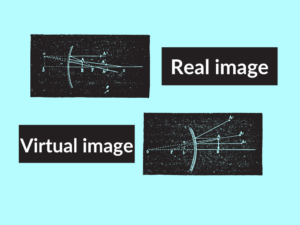What is 3D ultrasound?
A 3D ultrasound is a medical imaging technique that uses sound waves to create a three-dimensional image of an object or a developing fetus in the womb. It provides a detailed view of the external features of the object or fetus, allowing for a clearer visualization compared to traditional two-dimensional ultrasounds.
Examples of 3D ultrasound:
– Evaluating fetal abnormalities: Doctors use 3D ultrasounds to detect and assess any potential abnormalities in a developing fetus, such as heart defects, cleft lip, or neural tube defects.
– Gynecological examinations: 3D ultrasounds are also used for gynecological examinations to assess the health of the reproductive organs, detect tumors, or monitor the growth of ovarian cysts.
– Assessing fetal growth: Doctors use 3D ultrasounds to measure the growth and position of the fetus, ensuring it is developing properly.
What is 4D ultrasound?
4D ultrasound is an advanced version of 3D ultrasound that provides a live video-like image of the object or fetus. It adds the element of time to the 3D image, allowing parents to see real-time movements of their unborn baby.
Examples of 4D ultrasound:
– Bonding with the baby: 4D ultrasounds offer parents the opportunity to bond with their unborn baby by seeing their facial expressions, movements, and even reactions to stimuli.
– Obstetric examinations: Obstetricians use 4D ultrasounds to monitor the progress of the pregnancy, evaluate the placental health, and detect any potential problems such as umbilical cord abnormalities.
– Assessing fetal behavior: 4D ultrasounds can help determine the behavior patterns of a fetus, such as thumb sucking, swallowing, or playing with the umbilical cord.
Differences between 3D and 4D ultrasound:
| Difference Area | 3D ultrasound | 4D ultrasound |
|---|---|---|
| Image Quality | Provides still images with three-dimensional depth. | Offers live video-like images with time as the fourth dimension. |
| Real-Time Imaging | Does not provide real-time imaging; captures and displays static images. | Provides real-time imaging, allowing parents to see the live movements of their baby. |
| Depth Perception | Shows a three-dimensional depiction of the object/fetus, enhancing depth perception. | Enhances depth perception by showing real-time movements of the object/fetus. |
| Visualization | Offers a clearer visualization of external features. | Allows parents to see real-time facial expressions, body movements, and reactions. |
| Examination Time | Usually requires less time for examination due to capture of still images. | May require more time for examination as parents can view the live movements of the fetus. |
| Applications | Primarily used for assessing fetal abnormalities and gynecological examinations. | Used for bonding with the baby, obstetric examinations, and assessing fetal behavior. |
| Clinical Value | Provides essential diagnostic information for medical professionals. | Brings a sense of emotional connection for parents, enhancing the overall pregnancy experience. |
| Pricing | Generally more affordable compared to 4D ultrasounds. | Usually more expensive due to the added technology and real-time imaging. |
| Ease of Use | Simpler to operate and interpret the still images. | Requires more expertise to operate and interpret live video-like images. |
| Mobility | Can be easily used with handheld or portable ultrasound devices. | Requires a larger and fixed ultrasound machine for real-time imaging. |
Conclusion:
In conclusion, both 3D and 4D ultrasounds offer significant advancements in medical imaging technology and provide valuable information for medical professionals and parents alike. While 3D ultrasounds offer detailed still images, 4D ultrasounds take it a step further by providing real-time video-like images, enabling parents to bond with their unborn baby. The choice between the two depends on the specific needs and preferences of both medical practitioners and expectant parents.
People Also Ask:
Q: Are 3D and 4D ultrasounds safe for the baby?
A: Yes, both 3D and 4D ultrasounds are considered safe for the baby. The technology uses non-ionizing radiation, which does not pose any known risks to the developing fetus.
Q: How early can you have a 3D/4D ultrasound?
A: A 3D/4D ultrasound can be performed as early as 18-20 weeks into the pregnancy. However, it is recommended to wait until around 28 weeks for better image quality and more defined facial features.
Q: Can 3D/4D ultrasounds help in diagnosing genetic conditions?
A: While 3D/4D ultrasounds can provide valuable visual information, they are primarily used for imaging purposes and cannot replace genetic testing or other diagnostic procedures for detecting genetic conditions.
Q: Is there any preparation needed before a 3D/4D ultrasound?
A: The preparation for a 3D/4D ultrasound is similar to a regular ultrasound. It generally involves having a full bladder to improve image clarity and assist in obtaining better visualizations.
Q: Does insurance cover the cost of 3D/4D ultrasounds?
A: Insurance coverage for 3D/4D ultrasounds can vary. While it may be covered in specific medical situations, it is commonly considered an elective procedure and may not be covered by insurance.


